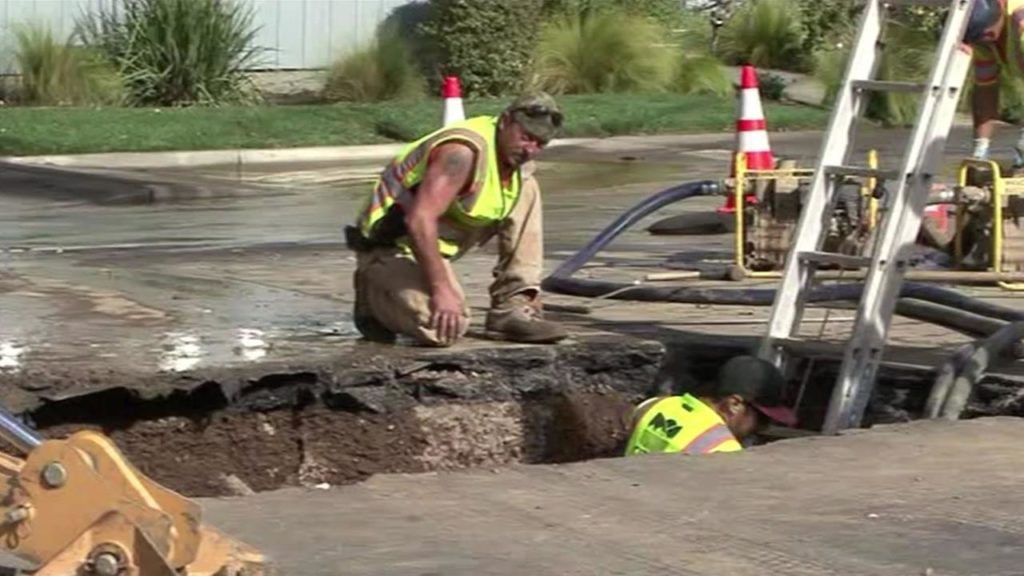 This report comes from Water technologist Neil Sweeney. He is passionate about clean water. Here’s his facebook page.
This report comes from Water technologist Neil Sweeney. He is passionate about clean water. Here’s his facebook page.
WHAT IS HAPPENING IN AUSTRALIA WITH WATER INFRASTRUCTURE?
If we are to go by the latest media reports, current water guidelines and the current state of disrepair of the mains pipe delivery system in our country then the health report card presented doesn’t look good for the country over the next decade; considering the size of our current deficit and what is put aside for water infrastructure and repair in the Budget.
Guys, Australia is in a WATER HEALTH CRISIS SITUATION which I would categorize as DEFCON 4.
In 2015 the Australian government released the Australian Infrastructure Audit-Executive Summary.
They only committed one page to discussing the water crisis in the nation but their conclusions were clear and damning.
“The water sector needs reforms to address quality, reliability and supply issues.”
The latest Water Health Guidelines provided by the NHMRC (National Health & Medical Research Council) which details the state of our current water system and how to treat it is now a huge volume to try and digest. The book is 1178 pages and the latest update in February 2016 discussed:
“Interim guideline values for chemicals that have “now” been detected in drinking water.” (extra chemicals since the last update)
Clarification of approval process for “new” drinking water chemicals, and modifications to inconsistencies to section 8.5 to 8.8.’ (recommendations were not sufficient to deal with contaminants)
Water infrastructure costs for each state are now beyond state government guidelines for expenditure and so they work on media campaigns to assure the Australian public that everything is ok and employ an “it’s broken, let’s repair that section” mentality.
To undertake major repair work on the thousands of kilometers of water pipes and upgrade the water treatment facilities in this country would be in the tens, if not hundreds of billions in capital expenditure.
Australia has let it go and simply can’t afford the repair bill, so they engage technology companies who can only monitor 1% of our underground water pipes.
Ian: Here’s the links if you are into a bit of masochism…
http://
“The failure of a major pipeline or reservoir could have far-reaching consequences. Not only could such an event have immediate catastrophic impacts to the surrounding area, there would also be long-term economic impacts on water, and possibly power, supplies to cities and towns. Repair and rebuilding costs would also be high.
As most pipelines are buried “out of sight and mind,” the water industry has had a reactive approach to maintenance whereby the pipes are run to failure, with individual pipe failures repaired until the failure rate reaches a predetermined level, at which point the entire section of pipeline is replaced. For smaller pipes, this is still considered “best practice” for the industry, but for larger critical pipelines a more proactive approach is being adopted.
“Replacing or repairing asbestos-laced cement pipes in the water network could cost about $8 billion over the next decade, an urban water sector industry group has estimated, adding to concerns about the cost of upgrades to Australia’s aging infrastructure.
The ABC yesterday reported that many water pipes were manufactured by James Hardie and that there were concerns that the government’s Asbestos Safety and Eradication Agency was being “stifled”.
They said work from bodies including the National Health and Medical Research Council ‘showed there was not a health risk to drinking water that was carried through the pipes’.
“The issue is not from drinking it,” Mr Lovell said, noting that work had to be done on ageing pipes as part of renewal programs. “The real issue here is around worker safety, community safety. That’s the key issue.”
The big delay in Australia to repair these broken Asbestos pipes is the fear of worker contamination. So repairs are often delayed; which affects water quality to your home tap.
Ian: More to come as Neil reports.
Want to learn more about how to protect your family? Go here or here.
